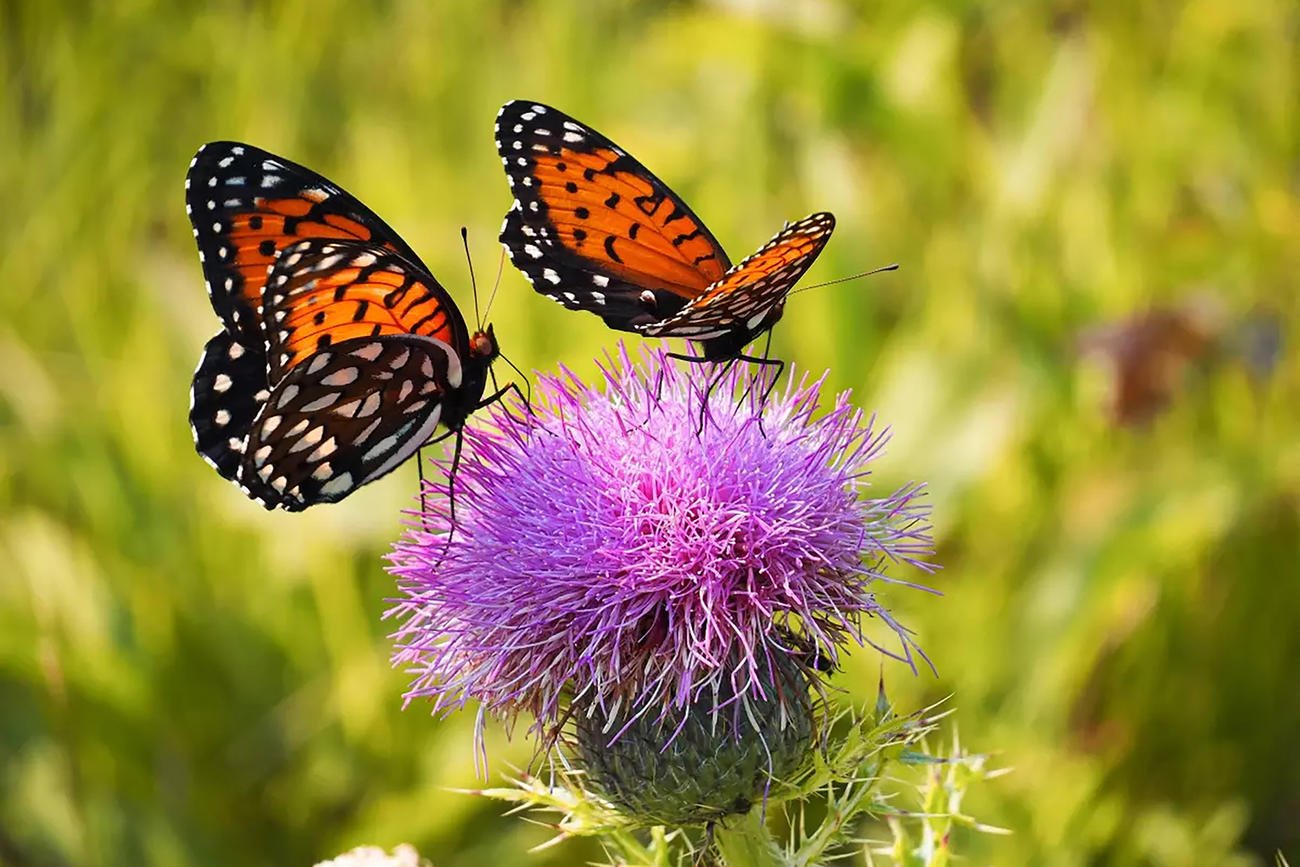

PHILADELPHIA — The eastern subspecies of the regal fritillary butterfly, marked by orange forewings and dark hindwings, is found in only one location in North America and is threatened with extinction.
That location: The 17,000-acre Fort Indiantown Gap National Guard Training Center in Pennsylvania, the most heavily used National Guard training center in the U.S. with firing ranges and combat simulation areas that get extensive use.
This month, the U.S. Fish and Wildlife Service (NWS) proposed that the eastern (Argynnis idalia idalia) subspecies of the regal fritillary, a large butterfly, be placed on the federal endangered species list. The NWS also proposed listing the western (Argynnis idalia occidentalis) subspecies as threatened.
What’s Special About the Eastern Regal Fritillary Butterfly?
Once found fluttering from New Brunswick to North Carolina, the eastern regal fritillary is now limited to the base in Lebanon and Dauphin Counties — about five miles north of Hershey. The caterpillars and emerged butterflies need the habitat to support larvae, sources of nectar, and tall sheltering grassland.
Officials say additional protection is needed because the butterfly can’t migrate to other areas if its current habitat is degraded or lost. Climate change and drought also threaten that habitat, as changes in temperature and moisture can impact bloom times of native violets, whose flowers the caterpillars need to survive. Adult regal fritillaries are large, about the size of a monarch, with wingspans of 2.67 to 4.13 inches.
Despite the loss of grassland habitats across the rest of its native range, the eastern regal fritillary has survived thanks to proactive efforts at Fort Indiantown Gap, notes the NWS. The military installation has, effectively, maintained the last population of the eastern regal fritillary in the world through a range of conservation practices.
What’s the Military Base Doing to Protect the Butterflies?
Indeed, the base has long had a wildlife management plan, which includes the eastern regal fritillary. As the result of a lawsuit in the 1990s by the North American Butterfly Association, base officials set aside 219 acres “of prime training fields” that harbored the biggest population centers of the butterfly. It then added additional areas to include other pockets where they were also found.
The land management includes increasing or maintaining the butterfly’s current population of more than 1,000 through use of prescribed fires that delays or halts growth of shrubs and trees, while keeping the grassland intact. The fields where the butterfly roam contain native grasses that provide the violets for caterpillars and other nectar plants for adults. The grassland is native to the base.
But the conservation location is definitely an odd pairing, given that the base provides facilities and services to various U.S. Armed Forces that require land and airspace to practice combat skills and operations on a year-round basis. On average there are about 2,100 soldiers, state workers and civilians who work there daily, and the base’s mission is unlikely to change.
There, soldiers bivouac, maneuver, and train with military vehicles, weapons firing, and air?to?ground weapons. There’s a 50-foot rappel tower, 11-station obstacle course, and four nuclear, biological and chemical chambers for training. Smoke and other practice grenades are used on site, as are booby traps.
What Additional Protections Are There?
So conservation managers at the base research and monitor wildlife habitat amid “rugged grasslands, shrublands, and oak / hickory forests that stand up well to military training, provide cover and concealment.”
The plan calls for restrictions to military use, including vehicles, in some areas. Base officials even host a public bird tour each spring, with stops at several eastern regal fritillary grassland habitats. Sometimes only a few people show up. Other times, a few hundred attend.
Further cementing efforts: The military base formalized an agreement in February that commits efforts to conserve the eastern regal fritillary. And in May, the Army gave $1 million to the base, NWS, and Temple University to help implement a plan that includes managing habitat, long-term monitoring, and establishing a new population in collaboration with the Pennsylvania Game Commission.
(c) 2024 The Philadelphia Inquirer
Visit The Philadelphia Inquirer at www.inquirer.com
Distributed by Tribune Content Agency, LLC.
© Copyright 2024 The Philadelphia Inquirer. All rights reserved. This material may not be published, broadcast, rewritten or redistributed.
